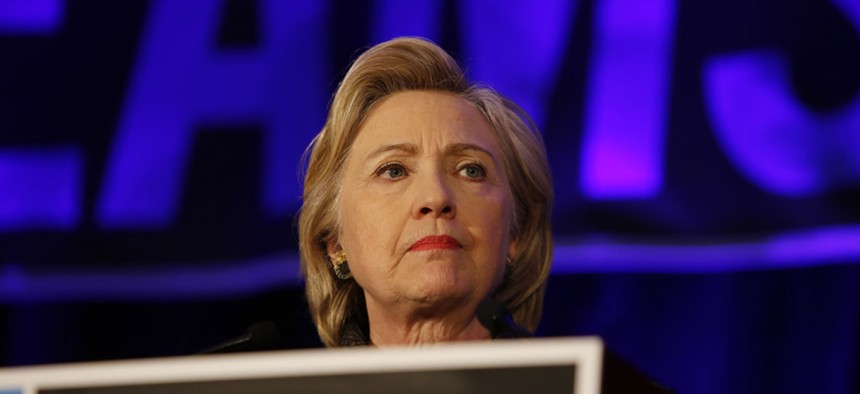
a katz / Shutterstock.com
Clinton Has a Plan to Cure Alzheimer’s
Investing now may be a smart way to avoid the $200 billion the disease is estimated to cost the economy each year.
Millions of Americans are celebrating Christmas or using the holiday period to visit family, and will be forced to confront reality: Their relatives are getting old, and someone has to take care of them.
Hillary Clinton’s campaign is carefully prepared to capitalize on those holiday anxieties, rolling out a plan today (Dec. 22) to cure Alzheimer’s disease by 2025. Similarly, just prior to the Thanksgiving holiday in November, her campaign proposed new tax credits for the 40 million Americans providing unpaid care to older relatives incapacitated by health conditions.
Alzheimer’s, a degenerative brain disease that “destroys memory and thinking skills” is also the “most feared disease” among seniors, according to Robert Egge, who leads the Alzheimer’s Impact Movement and endorsed Clinton’s plan on a phone call with reporters.
The disease affects some 6 million Americans now, but researchers forecast it could affect 16 million people by 2050 as the US population continues to age. Most Alzheimer’s sufferers and their caregivers are women, and the disease—now the sixth-leading cause of death in the US—has a higher incidence among African-American and Latino populations.
Last year, the US government spent $586 million on researching the disease; a new spending bill signed by US president Barack Obama will increase that number to $936 billion next year. Clinton says her administration would fund her proposed research initiative with $2 billion annually.
This was the amount recommended by panels of researchers and seconded by the National Institute of Health, where researchers say they are beginning to understand how abnormal levels of proteins, called Amyloids, build up in the brain, clumping and tangling around healthy brain cells. That understanding has important implications for developing treatment approaches.
“At 50 or 60 years old, just like you have a colonoscopy, your brain would be assessed for Amyloid load,” doctor Rudolph Tanzi at Harvard Medical School told reporters. “If it’s high, the goal is to give you a drug that, together with lifestyle, is going to reduce those amyloid levels, or reduce those tangles from spreading, [to] never get to the point where all three pathologies—plaques, tangles and inflammation—combine to bring you down the slippery slope. Stave it off five years, 10 years, for those at risk.”
Clinton’s proposal will be part of a package of increased investments in health research, but no candidate can credibly promise to provide years of stable funding. Her campaign staff say the additional money needed for the initiative would come from proposed tax changes that would require businesses and the wealthy to pay more than they do now—a difficult proposition given the Republican Congress’ skepticism of tax hikes.
Clinton has not addressed other ways to incentivize the development of new drugs, including through reforms of the Food and Drug Administration that would make it easier to bring them to market.
But Clinton can point to the large cost of the disease on the public, though family expenditures and through public spending on health care for seniors. Investing now may be a smart way to avoid the $200 billion the disease is estimated to cost the economy each year.
(Top image via a katz / Shutterstock.com )







